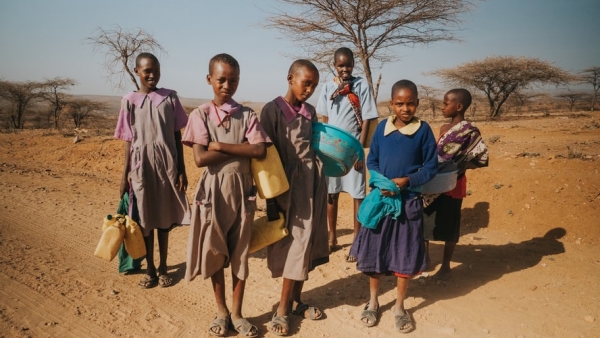Action on Armed Violence (AOAV) is a research charity that carries out analysis and monitoring activities on the impact of global armed violence in populated areas. In this report, Verity Hubbard, a consultant researcher for AOAV, has analysed the impact of explosive weapons on child nutrition.
The AOAV report underlines how food is still used as a weapon of war. According to Alex de Waal, the author of the book Mass Starvation, nowadays all famines are caused by war and hostility to humanitarian principles. Indeed, according to the World Food Programme (WFP), to end world hunger, conflicts must end too. Moreover, after ten years of steady decline, global hunger is on the rise again and one of the main reasons is the use of explosive weapons, such as air-strikes, shelling and improvised explosive devices (IEDs), that damage food supply chains and provoke man-made famine. Children are the main victims of food insecurity, suffering from malnutrition, stunted growth, wasting and death.
In particular, the impact of explosive weapons on nutrition is impressive since explosions damage the food chain, from production, to transport and distribution, causing food insecurity, increases in prices and hunger. According to the report, food production sites, such as agricultural assets, are mostly damaged by air-delivered explosive weapons, which damage soil, crops, irrigation canals and grain depots as seen in Eastern Ukraine and Syria. Even the perceived risk of future attacks provokes food insecurity since farmers avoid farming and land remains unused. Moreover, de-mined land is infertile due to the presence of contaminants in the soil and to the absence of nutrient levels.
With respect to food transport, aerial explosives cause great damage to food transport hubs, an example is the port of Hudaydah in Yemen. Indeed, according to The Economist, Yemen relies on imports for 90% of its food. In 2015, an airstrike hit the port and damaged food storage facilities leading to a reduction in the number of ships importing food, from 75 in July to 34 in august, and to a subsequent rise of food prices of 28%. In addition, food markets too are a target, in particular for terrorists, because attacking a food market allows to destroy food stock and causes many casualties. For instance, Iraq is the country which records the highest number of explosive weapon attacks on markets: in the period between 2011 and 2019, 394 incidents have been registered. Besides, the report underlines how the tactics of modern conflict prevent humanitarian agencies from delivering assistance to those in need. Often, humanitarian support is hit by explosive weapons or their entry is denied. As such, food insecurity is an intrinsic characteristic of modern conflict.
In addition, according to the report, children are those who suffer the most from food scarcity. Micronutrient deficiencies and chronic or acute malnutrition are the main consequences of food insecurity for children. Generally, more than one in four children are affected by stunting and 80% of the world’s 144 million stunted children live in areas affected by war. Furthermore, the risk of death for malnutrition is very high, at least 45% of deaths among children aged five are linked to malnutrition. According to the World Health Organisation (WHO), children who suffer stunting in conflict-affected areas develop cognition problems and nutrition-related chronic diseases.
Finally, the report shows how child malnutrition is not only linked to starvation but also to the types of food eaten by children in conflict zones. Indeed, food supplies in camps are inadequate for young children since they lack key nutrients. Instant-cooking foods have too high levels of sugar impacting on child health and provoking obesity. For instance, the report underlines that in 2016, in Syrian refugee camps the percentage of overweight or obese children was higher than the incidence of wasting or stunting. The unexpected high prevalence of overnutrition is mainly due to the poor quality of the food provided in camps.
As a result, the report shows how food is still used as a weapon of war and that children are the first to be targeted. Accordingly, more research must be done on the correlation between the use of explosive weapons and malnutrition in conflict-affected areas.
To know more, please read:
https://aoav.org.uk/2021/the-impact-of-explosive-violence-on-child-nutrition/
https://www.economist.com/the-economist-explains/2017/04/12/yemens-worsening-humanitarian-crisis
Author: Eleonora Gonnelli; Editor: Benedetta Spizzichino







